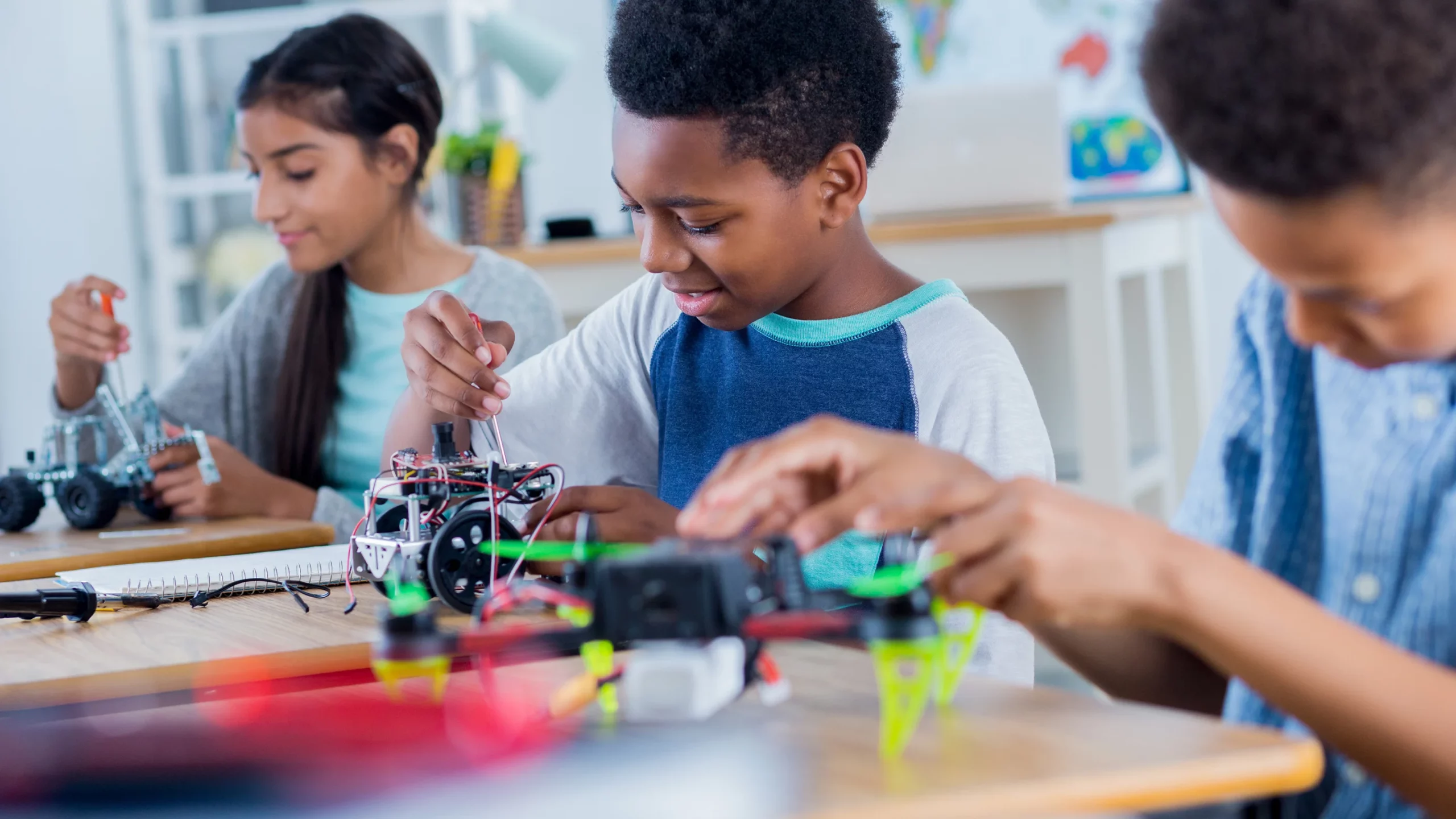What is educational robotics?
Technology has become essential in our daily lives, to the point where girls and boys are already considered digital natives and are totally used to using various types of technological devices. At this point, educational robots for boys and girls begin to gain importance.
In addition, as it progresses, it becomes an increasingly essential element in daily life, so it is essential that girls and boys learn to handle and understand it from an early age. In this way, in addition, the bases are laid so that later on they can not only use them but also evaluate, transform and create them.
Educational robotics is a tool at the service of the educational field, which focuses on the pedagogical use of specially designed robots with the aim of facilitating meaningful learning. It can be used at all educational levels, from kindergarten to postgraduate.
Benefits of educational robotics and educational robots for children
The importance of educational robotics is especially visible in the following areas:
- Computational thinking, logical-mathematical thinking, programming and sequencing.
- Skills such as teamwork, communication, problem solving, creativity and imagination.
- Engineering, electronics, sensors and physics
- Curricular contents: language, mathematics, biology, history.
- Computational thinking and educational robots for boys and girls
- Computational thinking is a mental process facing a problem.
When we face a problem putting computational thinking into practice, we try to propose solutions that can be represented as sequences of instructions and algorithms, necessary skills in computing.
Thanks to computational thinking and educational robots for boys and girls, they can develop a series of capacities that can be very useful in their day-to-day life and in the future, not only because they will be able to opt for training in professional fields related to computer science in simpler way, but because in the highly technical world in which we live and will live, it is key to be able to go further so that technology is at our service and not the other way around.
Foundations of computational thinking

The four pillars of Computational Thinking are:
- Decomposition: Breaking down a complex problem or system into smaller, more manageable parts.
- Pattern recognition – Search for similar problems or parts of the problem.
- Abstraction – Ignoring irrelevant details and focusing on relevant information.
- Algorithm: develop a step-by-step solution to the problem or rules to follow to solve the problem.
The development of this type of thinking is key to complex human abilities and also helps to understand what problems can be solved by computing:
- It allows to evaluate which applications or techniques are the most suitable for a problem.
- Reinforce numerical skills.
- It allows adapting an existing computational tool for a new use.
Educational robotics also has a long history in this area, especially when we talk about robots that require construction or plates. The double role, constantly adapting software and hardware is a practically inexhaustible vein in which trial and error play a fundamental role.
Better an educational robot for children than a textbook?
Virtually any curricular content can be taught or reinforced through educational robots for boys and girls. The motivating factor provided by the robot, added to the appropriate design of the activity, results in a motivating and meaningful learning environment.
Other skills favored by educational robots for boys and girls
In addition to the benefits listed above, thanks to educational robotics other capacities are also developed:
- Encourages teamwork and communication.
- Improve spatial orientation
- Develop leadership skills.
- Increase creativity and curiosity.
- Develop critical thinking
- Encourage collaborative learning.
- Improve problem solving.
- Improves concentration.
In summary, educational robotics encompasses a broad framework of pedagogical objectives, which of course are not watertight. All areas are mobilized and interact with each other. The activity proposal that we take to the classroom will be the one that will determine which areas we want to give more weight to at each moment.
Society demands a technological innovation focused on solving the challenges that humanity faces. Achieving this starts with innovation in early childhood education. Encourage the development of computational thinking in the classroom, learning based on experimentation, making the learner the protagonist of their learning, a critical spirit… have become basic needs, and the introduction of activities that help develop this type of capacities are on the rise, both in Europe and globally.
Educational robotics in the classroom is an element that optimally stimulates students in the acquisition of a wide range of skills and knowledge by playing, which is the language of childhood.

Leave a Reply